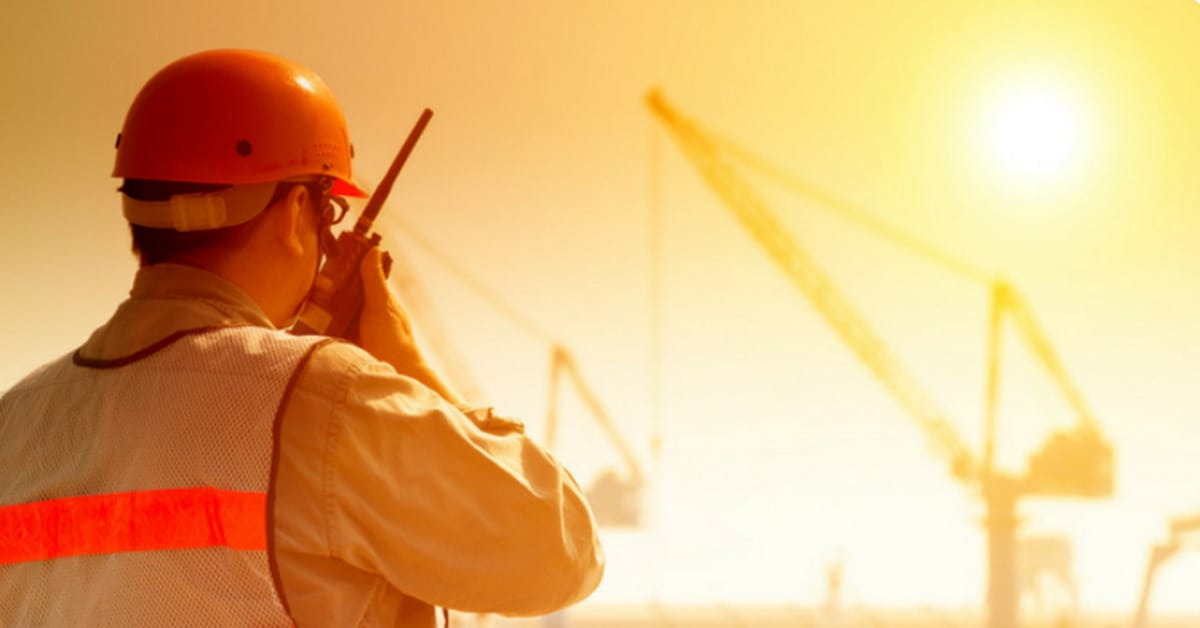Industrial assets are found all around the world, in some of the harshest environmental conditions. This includes hot areas, which pose a unique set of challenges for operators.
Operators expect rapid access to safe and reliable Drops prevention solutions no matter their location. As a global Drops prevention leader, Dropsafe designs its products to meet the operational requirements of every climate and maintains a global network of trusted distributors.
One such distributor is Australian-based industrial safety solutions provider Teksal Safety. Dropsafe spoke to Joe Hischar, Managing Director of Teksal, for his perspective on safety risks due to high temperatures, and other environmental factors such as high humidity and UV. This article outlines how operators can mitigate these risks by opting for high-quality materials.
High temperatures and Drops risks
There are four key risks typically seen on industrial sites in hot climates:
- Temperature fluctuations
- Humidity and saltwater
- UV exposure
- Human factors
1. Temperature fluctuations
In markets such as Australia or the Middle East, ambient daytime temperatures can reach 45°C. In enclosed environments such as mines, machinery areas or oil rigs, this can hit 50°C, causing components and structures to expand. In arid, exposed areas, temperatures can drop rapidly at night, leading to thermal stress. This can weaken the structural integrity of equipment, fixtures and fittings, contributing to Drops risks.
Joe Hischar explains: “In some areas, we see wide temperature variations, and with temperature variations comes cyclic stresses, from cold to extremely hot. Most of our business is coastal, so assets are susceptible to coastal environmental conditions such as cyclones, in addition to wide temperature swings, which all increase Drops risks.”
- Humidity and saltwater
Humidity is a well-known cause of corrosion, especially when combined with heat, and operators in humid areas must consider the risk to key structures, as well as key process equipment such as pipes, valves and pressure retaining systems. Additionally, offshore assets – and those on coastal sites – are subject to additional degradation due to exposure to chloride ions in sea spray.
As Hischar notes, this causes “chloride corrosion in metals, increasing cracking or pitting, and in turn, raises Drops risks due to damaged fixtures and structures.”
Corrosion can ultimately cause fixtures such as CCTV cameras and floodlights to come loose and fall, requiring safety solutions – such as stainless-steel secondary securing nets – that are resistant to corrosion.
Knowledge transfer is key to adapting safety solutions to local conditions, says Hischar. “Beyond Dropsafe, we see varying levels of safety standards applied. Australia is very much at the forefront, but manufacturers in Europe aren’t always aware of the corrosive effects of our environment.”
- Ultraviolet radiation (UV) exposure
In industries such as oil & gas and mining, barrier systems are routinely deployed on stairways and railings to prevent loose objects such as tools from falling through, and to contain ricochets. In hot climates, exposure to increased UV radiation poses a challenge for operators, as over time, UV radiation can cause polymer-based components and safety solutions to degrade and become less effective. Operators should therefore opt for equipment certified for UV resistance to ensure safety is upheld in the long-term.
“UV exposure is a big risk in markets with high-intensity sunshine, particularly for low-quality polymer barrier systems. Dropsafe uses a high UV stabilised polymer for their Drops prevention barrier system, so the life expectancy of the product is industry leading. Crucially, the testing regime is stringent, providing peace of mind for operators,” comments Hischar.
- Human factors
Personnel fatigue can be an issue when operating in high temperatures, which may lead to mistakes or failure to comply with safety regulations. For instance, reluctance to wear full PPE – or discomfort wearing heavy protective clothing in the heat – or use appropriate tool lanyards at height can lead to increased safety risks.
Hischar says: “Working in high temperatures for long periods may lead to increased safety risks for personnel. Going back to the hierarchy of controls, engineering controls can help in this situation, as they are less reliant on individuals. Even if mistakes are made, Drops incidents can still be mitigated safely.”
The solution: Using quality materials for Drops prevention equipment
To mitigate increased Drops risks caused by corrosion, using high-quality materials for structures and safety solutions is critical. Hischar points to Teksal Safety’s wide industrial experience, which confirms the importance of selecting appropriate materials for the operating environment.
“We deal with a range of safety products, such as pressure-retaining products where higher grade material is critical for the primary process. Across that whole industry there is demand for high-grade stainless steel, not just for pressure-retaining equipment but fasteners, nuts and bolts and fixing materials. It’s quite common for these to be highly specified, such as the gold-standard 316 stainless steel.”
Operators should therefore question whether their chosen solution will retain the Drops incidents after years of exposure to the elements. Hischar warns that short-term cost sensitivities could leave operators at risk of Drops incidents should their Drops prevention solutions suffer significant corrosion.
“Not everybody uses 316, but by looking to save a few dollars they will use cheaper steels and leave their assets open/susceptible? to corrosion. It defeats the purpose of installing a Drops solution by choosing inferior products.”, he says.
Dropsafe has accordingly built its experience of extreme weather conditions into its range of safety solutions, using marine-grade 316 stainless steel for its Nets and durable UV resistant polymer for its Barrier system.
Hischar concludes: “316 stainless steel and advanced polymer are the materials of choice in high-temperature, high-humidity environments where chloride corrosion is a risk. Inferior grades of stainless steel have different alloys, instead of corrosion-resistant molybdenum, while low-quality polymers lose their structural integrity after sustained UV exposure. This can eventually result in system failure and Drops incidents, which is why we advise operators to select the materials of their safety solutions based on the conditions their assets experience.”
